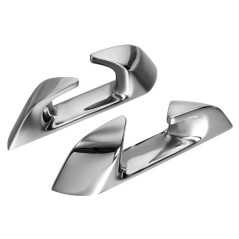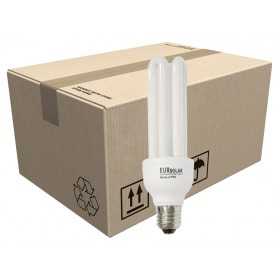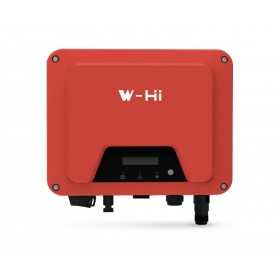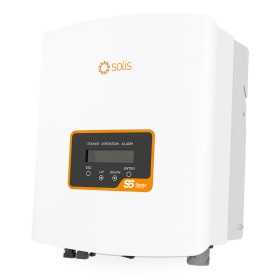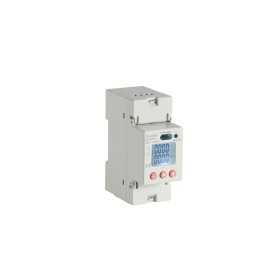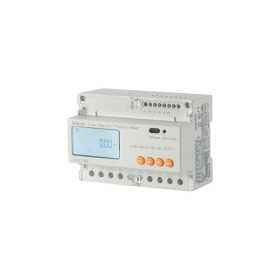Home
- Products
- Anchorage and Mooring
- Oars and accessories
- Bow rollers and accessories
- Windlasses and accessories
- Anchors shackles and accessories
- Shackles and swivels for anchors
- Rocna anchors in galvanized steel
- Spade Anchors
- Ancore Ammiragliato
- Hall anchors
- Danforth type anchors
- AZARTA Galvanized Steel Anchor
- Kobra anchors
- Toro anchors
- Plough anchors
- Trefoil anchors
- Fortress anchors
- Umbrella anchors
- Plastimo DC anchors Delta type
- Lewmar anchors
- Anchor packages and anchor lines
- Floating anchors
- Fairleads and hawsehole
- Cleats and protection plates
- Mooring springs and shock absorbers
- Chain swiveling joint and accessories
- Ropes and accessories
- Fenders and accessories
- Bumpers and fender profiles
- Bumpers for docks and piers
- Buoys and floats
- Oars and accessories
- Deck Equipments
- Auxiliary outboard bracket
- Flag poles and supports
- Windsock vents and aerators
- Pulpits tubes and handrail accessories
- Ladders and accessories
- Walkways and accessories
- Stern platforms dolphin striker and accessories
- Lifting Cranes and accessories
- Anti-rat devices
- Rod holders and fishing accessories
- Bathyscopes for day and night use
- Bimini top and accessories
- Porthole inspection caps and accessories
- Stainless steel roll-bar
- seats formwork columns and accessories
- Stainless steel knives and multi-use tools
- Tables and adhesive codes
- Gas springs telescopic hatch and accessories
- Stainless steel hardware for deck
- Wipers, glass and windshield accessories
- Reinforced PVC profiles and ducts for borders
- Maintenance and Cleaning
- International antifouling paints and products
- Veneziani antifouling paints and products
- Marlin antifouling primer resin
- Hempel antifouling primer
- Boero antifouling paint and products
- Lubrificats additives and accessories
- 3M Paper tapes and products
- Tools and materials for polishing
- Tools and materials for painting
- Rust converters
- PPE suits gloves protective masks
- Euromeci cleaning and maintenance products
- Sound absorbing and sound insulation
- CRC and CFG lubrificants and greases
- Boat washing brushes pipes fittings
- Ma-Fra cleaning products
- Waterline tapes
- Osculati cleaning products and accessories
- Owatrol wood care
- Reparation products of PVC and Neoprene
- Star Brite products
- Resins fillers gelcoat silicons
- Sikaflex sealants
- Teak Wonder products for teak
- TK Line special paints and products
- Epifanes paints
- Yachticon cleaning and maintenance products
- Spray paints for marine engines
- International antifouling paints and products
- Steering trim maneuvering systems
- Engine storage and spare parts
- Anodes and zincs
- Arneson transmission anodes
- Bukh anodes
- Plate anodes
- Nanni Merceders barrel anodes
- Washer anodes
- Barrel anodes for heat exchangers
- Anodes and complete kit for Honda engine
- Anodes and complete kit for Yamaha Marine engine
- Anodes for BMW sterndrives
- Anodes for MAX-PROP and J-PROP propellers
- Bracelet anodes for propeller shaft
- Disc anode for rudders and flaps
- Ingot anodes
- Anodes for Selva engines
- Anodes and complete kits for Suzuki engines
- SUPER OFFER Anodes
- Anodes for Renault Marine engines
- Collar anodes for Lombardini shaft
- Low anodes for propeller shafts
- Zinc anodes for Tohatsu engines
- Anodes and kits for Mercury Mercruiser Bravo Alpha shaft
- Vetus Radice propeller shaft anodes
- Bolt-on anodes for hulls
- Soap bar zinc anodes
- Anodes for Yanmar engines
- Vetus type anodes
- Anodes and kits for OMC Johnson Evinrude BRP engines
- Anodes and complete kits for Volvo motors and shaft
- Engine filters
- NGK and Champion spark plug
- Impellers for engine water pumps
- Ricambi per carrelli porta barca
- Shaft-line bushings
- Engine wash caps
- Stern protection plates
- grommet bush
- Solas propellers in aluminum and stainless steel
- Mercruiser spare parts
- Volvo spare parts
- Engine bar extensions
- Automatic safety switches and ignition keys
- Mufflers silencers
- Fuel couplings
- Gland packing and rubber stuffing box
- Various engine spare parts
- Sound absorbing panels
- Outboard engine stands
- Stainless steel line clamp cutter
- Rollers wheels and hauling winch
- Tarpaulin cover and accessories
- Straps with ratchet
- Anodes and zincs
- On-board instruments
- SIMRAD Fishfinders GPS multifunction RADAR
- LOWRANCE Fishfinders GPS Multifunction RADAR
- RAYMARINE GPS Fishfinders Multifunctions Radar AIS
- B&G GPS Multifunction Wind Systems
- Garmin GPS fishfinder autopilots VHF AIS
- High precision inclinometers
- Windex and Anemometers
- Terrestrial and satellite TV antennas
- VHF AIS Radio Cellular and WiFi Antennas
- Chart tools
- Radio stereo speakers and accessories
- Navionics electronic chart for GPS
- VHF Epirb and accessories
- Watertight suitcases for electronic instruments
- Meteorological instruments
- Accessories for electronic instruments
- Fixed and bearing compasses
- Engine instruments and level indicators
- Binoculars and Spotting Scopes
- Thermal Night Vision and Rangefinder
- SIMRAD Fishfinders GPS multifunction RADAR
- Safety on board
- Pharmacy and first aid
- Bright buoys and signal lights
- Radar reflectors and daytime distress signals
- Seat belts and bansigo
- Life jackets, individual life-saving equipment
- IOR rod man over board
- Fire extinguishers
- Distress signal kit
- Self-inflating life rafts
- Oats boots and gloves
- Buoys and signaling floats
- Bags for on-board equipment
- Document holder watertight bags and floating key rings
- Whistles, trumpets and bells
- Scoops, cones and emergency belts
- VHF EPIRB emergency communication
- Safety instruments
- Personal protective equipment
- On-board comfort
- Bicycles scooters and accessories
- Tables and accessories
- Chairs and armchairs
- Lighters and ashtrays
- Cushions and padded back
- Tableware and crockery
- Carpets and doormats
- Heaters and 12 volt fans
- Furniture for interiors and nautical objects
- Coat hangers and hooks
- Vacuum cleaner and accessories
- Clothes pegs
- Small appliances and kitchen accessories
- Document holder and Floating keychains
- Carpet fabrics and upholstery accessories
- Shower gel and shampoo
- Net for railing
- Barbecue hobs and cookers
- Electronic safes
- Solar and Wind Energy
- Stainless steel screws
- Stainless steel cotter pins
- Plastic under-screws and screw covers
- Stainless steel stud kit
- A2 stainless steel threaded rods
- Mixed grains and screw boxes
- A2 stainless steel nuts and washers
- Wing nuts in A2 stainless steel
- A2 stainless steel rivets
- A2 stainless steel Allen screws
- Self-tapping screws in stainless steel A2 DIN7981 Convex cilindric head
- Self tapping screws inox A2 DIN7982 flat countersunk head
- Self tapping screws inox A2 DIN7983 countersunk head with Cap
- Slotted cylindrical head A2 stainless steel screws
- A2 stainless steel screw with hexagonal head
- A2 Stainless steel screw anchors
- A2 Stainless steel chipboard screw
- A2 stainless steel screws with slotted cap
- Hexagonal socket head screws
- Sailing equipments
- Winch and accessories
- Blocks and organiser
- Cleats and fairleads
- Vang and mainsail shock absorbers
- Stopper
- Tensiometers
- Sails repair tapes and wires
- Tiller extension and accessories
- Bansigo steps and accessories
- Bungee sail tie hooks and elastic cord
- Turnbuckles terminals and hardware
- Protection accessories
- Wind vane ribbons and sailing accessories
- Splicing accessories and tools
- Jackets boots and gloves for sailing
- Furlers & Furling systems
- Coloured bridges
- Rigid and self-inflating liferafts
- Dinghy and water sports
- On-board Lighting
- 12v and 24v LED bulbs
- Filament bulbs 12v and 24v
- Underwater LED lights and spotlights
- Luminous rods for anchor light
- Spotlights and deck lighting
- Courtesy LED lights
- NEON and fluorescence lights
- Lights and flashing lights for priority vehicles
- LED strips and bars
- AC-DC power supplies for LEDs
- Torches and inspection lights
- LED reading and charting lights
- Navigation lights
- Applique and indoor spotlights
- LED ceiling light
- Recessed LED lights
- Retractable LED lamps
- 230V LED Bulbs
- Plants and Hydraulics
- Rigid flexible tanks and canisters
- Hoses and hose clamps
- Fuel and water boarding caps
- Hydraulic fittings, sea intakes and discharge
- Vents for fixed tanks
- Expansion caps and bushings
- Water pressure pump
- Water filters
- WC and bathroom accessories
- Pumps for oil extraction and diesel transfer
- GOK Campingaz accessories for GAS systems
- Stainless steel sink and drainage pipes
- Hand showers, taps and accessories
- Boiler heats water in stainless steel
- Bilge pumps and accessories
- Oxygenators for livewells
- Desalinators
- Air Conditioners Heat Pumps and Heaters
- Rigid flexible tanks and canisters
- Freezer Refrigerators and Icebox
- Vitrifrigo cellar 12-24v
- 12-24v portable refrigerators-freezers
- 12-24 volt refrigerators
- Vitrifrigo trivalent refrigerators
- Evaporator compressors and fridge accessories
- Vitrifrigo fridge-freezer in stainless steel
- Well refrigerator-freezers
- Vitrifrigo freezer
- Vitrifrigo drawer fridge-freezer
- Ice makers
- Iceboxes and accessories
- Vitrifrigo Frigo-freezer combined
- Absorption Minibars
- Compressor Minibars
- Refrigerators and Freezers ready for delivery
- Marine Hardware
- Hinges in stainless steel, chromed brass and plastic
- Plastic hinges
- Hinges in chromed brass
- Special hinges
- 0.8mm thick stainless steel hinges
- 1mm thick stainless steel hinges
- 1.2mm thick stainless steel hinges
- 1.3mm thick stainless steel hinges
- 1.5mm thick stainless steel hinges
- 1.7mm thick stainless steel hinges
- 2mm thick stainless steel hinges
- 2.5mm thick stainless steel hinges
- 3mm thick stainless steel hinges
- 4mm thick stainless steel hinges
- 4.5mm thick stainless steel hinges
- 5mm thick stainless steel hinges
- 2.8mm thick stainless steel hinges
- Closed rings in stainless steel
- Accessories for doors and lockers
- Stainless steel jumpers
- Padlocks and lock for outboard
- U-bolts in 316 stainless steel
- Hooks and eyes with screw
- 316 stainless steel eyebolts
- Stainless steel, alloy and plastic carabiners
- 316 stainless steel shackles
- Handrails in stainless steel and wood
- Tubes Bases and fittings for pulpits
- Clothes hangers
- Gas springs and fixing plates
- Sleeves and clamps for steel cables
- Turnbuckles and accessories
- Stainless steel wires and parafil wires
- Parafil wires
- 133 wire stainless steel cable sold by the meter
- 133 wire stainless steel cable sold per reel
- 19 wire stainless steel cable sold per reel
- 49 strands stainless steel cable sold per reel
- PVC coated 19 strand stainless steel cable sold per reel
- Accessories for stainless steel cables
- PVC coated 49 strand stainless steel cable sold per reel
- Equipments and tools
- Hinges in stainless steel, chromed brass and plastic
- On-board electricity
- Voltage reducers
- Charge separators
- Battery combiner
- battery switch and diverters
- Dashboard warning lights
- faston and terminals
- Low voltage sockets and plugs 12-24v
- 230v plug sockets and dock cables
- Electric wires and cables for on-board systems
- Electrical wires for batteries and terminals
- Switches and buttons
- Electrical panels
- Fuses and fuse holders
- Magnetothermic switches
- Current generators
- AC-DC battery chargers
- Sheath clamps and insulating tapes
- Batteries for starting and on-board services
- battery boxes and battery accessories
- Wireless charger for smartphones
- Victron Energy pure sine wave inverter
- Victron Energy inverter with battery charger
- Pliers Cutter Heater
- Electric cable gland
- Off Grid DC-AC inverter
- Electrical cable junction nodes
- Anchorage and Mooring
Selected products
Set 2 pieces of Anodized light alloy symmetrical fairlead - 210x38mm N11102500249-2
Stainless steel Capri Straight roller fairlead Bow Rope up to Ø 22mm OS4030500
Special Products
0-5 adjustable stainless steel base for Glomex Sat Antennas FNI5509500
0,75l Accumulator tank Max pressure 8,6 bar N43838601058
1/2 inch bronze non-return valve N43437601077
10 pins for Q-SNAP tool for correct positioning of fasteners OS1030016
10 plastic caps for Q-SNAP snap fasteners OS1030017
10 Prym press fasteners male + female for fabric OS1030102
10-30VDC Universal chain counter radio control IP67 868MHz OS0236801
100 piece Set CFL Fluorescent Bulbs 15W 12V 6400K Cold Light E27 ET27550320100
100 piece Set CFL Fluorescent Bulbs 15W 24V 2700K Warm Light E27 ET27550321100
Single-phase string inverter
The inverters for single-phase grid connection are the most common ones that are used in homes with power plants generally ranging from 3 kw to 6 kw. Consent to connect the system to the electricity grid by synchronizing with it. The inverter is the heart of a photovoltaic system because it is that device capable of transforming the current generated by the PV system and making it usable for common use. These inverters are used to connect photovoltaic systems to the grid and take advantage of on-site exchange, where the energy generated can be used directly at no cost and the excess is fed into the grid.
It involves writing in the form of a type of continuous electrical energy to be printed directly into the electrical grid. These machines extend the basic function of an inverter or with extremely soft and avant-garde functions, through the use of particular software and hardware control systems that help extract the maximum power available from the solar panels in any weather condition.
This takes the name of MPPT, an acronym of English origin which stands for Maximum Power Point Tracker. In fact, photovoltaic modules have a V / I characteristic curve such that there is an optimal working point, called Maximum Power Point, where it is possible to extract the maximum available power.
This point of the characteristic varies continuously as a function of the level of solar radiation hitting the surface, the temperature of the cell and others derived from ideal conditions. It is evident that an inverter able to remain "hooked" at this point (which is by its nature in motion) will always obtain the maximum available power in any condition. There are several techniques for implementing the MPPT function, which differ in dynamic performance (settling time) and accuracy. the accuracy of the MPPT is extremely important, the settling time is, in some cases, even more so. While all inverter manufacturers are able to achieve great accuracy on the MPPT (typically between 99-99.6% of the maximum available), only a few are able to combine precision and speed.
It is in fact in the variable cloudiness that it is powerful. It is very common to detect changes from 100 W / m² to 1000–1200 W / m² in less than 2 seconds. In these conditions, which are very frequent, an inverter with settling times of less than 5 seconds can produce up to 5% -10% more energy than a slow one.
Some photovoltaic inverters are equipped with modular power stages, and some are even equipped with an MPPT for each power stage. In this way manufacturers leave the freedom to configure an independent master / slave or MPPT to system engineering. The use of independent MPPT provides an objective advantage in uneven irradiation conditions of the panels. In fact, it is not uncommon for the surface of the solar panels to be diffused to the sun in a different way over the whole field. This is because it is arranged on two different pitches of the roof, because the modules are not distributed on strings of equal length or because of partial shading of the modules themselves. In this case, the use of a single MPPT would lead the inverter to work all the panels outside the maximum possible power point, while dividing the system into several steps each would work on its MPPT and consequently the energy production would be maximized. Another important feature of a photovoltaic inverter is the network interface. This function, generally integrated in the machine, must meet the requirements imposed by the regulations of the various electricity supply bodies.
In Italy, the CEI has released the CEI 0-21 standard, currently in edition 2. This legislation provides for a series of safety measures to prevent the introduction of energy into the electricity grid if its parameters are out of bounds. of acceptability.
If the electricity is supplied by the utility company, the latest models of photovoltaic inverters (even if the panels feed the energy into the system in the direction of the utility to prevent sending) around on the electrical system that is switched off a voltage without the installer or maintenance technician or technicians of the utility company knowing of the existence of a photovoltaic system that may be producing energy.




